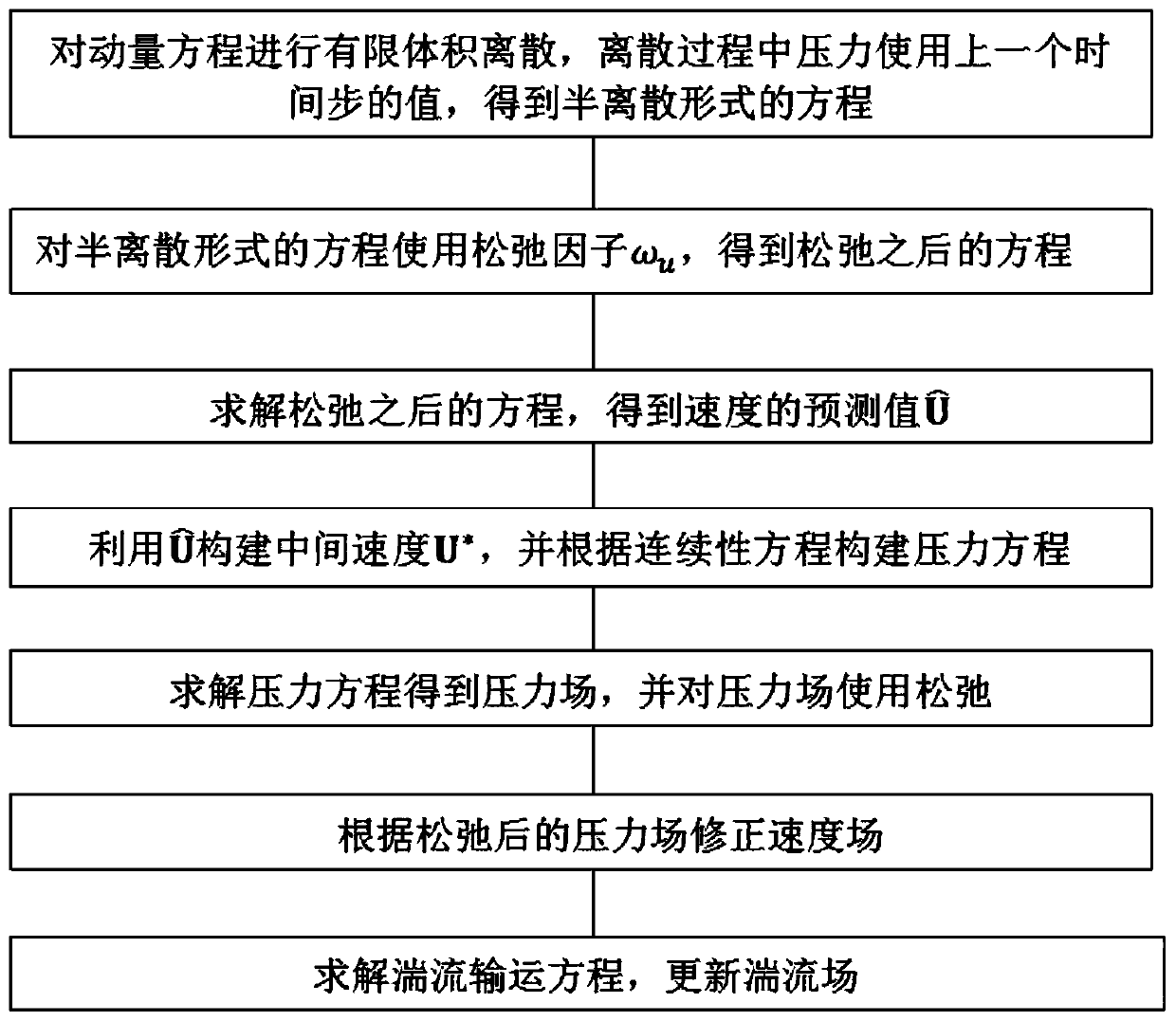Steady-state Navier-Stokes equation solving method for automatically calculating optimal relaxation factor
A relaxation factor and automatic calculation technology, applied in design optimization/simulation, complex mathematical operations, CAD numerical modeling, etc., can solve problems such as unable to continue to decline, achieve the effect of ensuring calculation stability and improving convergence speed
- Summary
- Abstract
- Description
- Claims
- Application Information
AI Technical Summary
Problems solved by technology
Method used
Image
Examples
Embodiment
[0048] The method proposed by the invention is suitable for solving the steady-state Navier-Stokes equation. The Navier-Stoke equation is a partial differential equation. Here we take the finite volume discretization method as an example to show the numerical solution process. According to the flow of the algorithm, the partial differential equations involved in solving are mainly equation (1). Here we show how to discretize equation (1). Substituting the stress τ into equation (1) and sorting it out, the following equation is obtained:
[0049]
[0050] Using the finite volume method, the convection term Discrete as follows:
[0051]
[0052] where F=(U) f ·S f is the volume flow through the surface. It can be seen that the value U of the transported amount U on the surface needs to be calculated here f, which needs to be calculated through the discrete format of the convection term, commonly used formats include second-order upwind, QUICK, etc. Diffusion term ...
PUM
 Login to View More
Login to View More Abstract
Description
Claims
Application Information
 Login to View More
Login to View More - R&D
- Intellectual Property
- Life Sciences
- Materials
- Tech Scout
- Unparalleled Data Quality
- Higher Quality Content
- 60% Fewer Hallucinations
Browse by: Latest US Patents, China's latest patents, Technical Efficacy Thesaurus, Application Domain, Technology Topic, Popular Technical Reports.
© 2025 PatSnap. All rights reserved.Legal|Privacy policy|Modern Slavery Act Transparency Statement|Sitemap|About US| Contact US: help@patsnap.com



